 |
 |
 |
| |
Low adherence to guidelines recommendations for hepatitis D
testing in HBsAg-positive patients leads to high undiagnosis rates
|
| |
| |
AASLD 2021 Nov 12-15
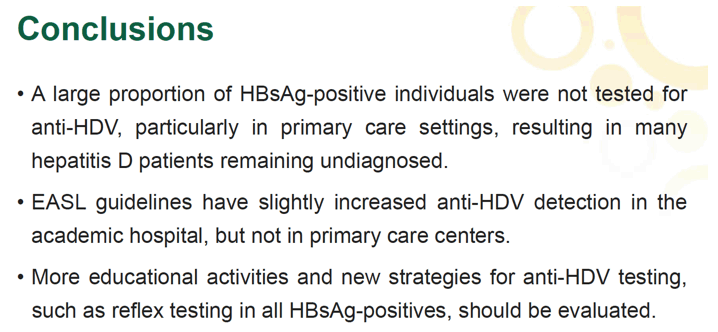
Background:
Hepatitis D is the most severe form of viral hepatitis, as it leads to cirrhosis and hepatic decompensation faster than chronic hepatitis B. The prevalence of chronic hepatitis D worldwide is controversial, and the infection often goes unrecognized due to limited access to testing for anti-HDV antibodies and HDV-RNA. In 2017, the EASL recommended anti-HDV testing in all HBsAg-positive individuals, whereas the AASDL recommended this test in HBsAg-positive people with risk factors. The aim of this study was to analyze adherence to the EASL recommendations in HBsAg-positive patients in a population area of 400,000 inhabitants in Barcelona (Spain).
Methods:
In total, 13,225 HBsAg-positive determinations from 4385 patients were included in the study. Patients had been seen in an academic hospital and in 17 primary care centers from January 2015 to May 2021. One sample per patient was evaluated for hepatitis D testing. Demographics and characteristics were recorded in anti-HDV-positive individuals, and the presence of HDV-RNA in those who underwent this testing.
Results:
From a total of 4385 HBsAg-positive patients, 360 (8.2%) were screened for anti-HDV antibodies with 37 (10.3%) testing positive. Anti-HDV testing was performed in 7.5% (203/2713) of individuals tested before the EASL guideline recommendations (period 2015-2017) and in 9.4% (157/1672) of those tested after the recommendations (period 2018-2021) (p=0.015). Anti-HDV testing was requested in 78% of HBsAg-positive individuals attending an academic hospital (281/360) and only 22% (76/360) of those in primary care (figure). The characteristics of the 37 anti-HDV-positive patients were as follows: 62% male, mean age 43±12 years, 57% migrants (mainly from sub-Saharan Africa, Rumania, and Mongolia), 84% HBeAg-negative, 90% undetectable HBV-DNA, and 67% elevated ALT. Liver cirrhosis assessed by APRI and FIB-4 was present in 30%. HDV-RNA was tested in 84% (31/37) of anti-HDV-positive patients and was detectable in 25 (80%).
Conclusion:
A large proportion of HBsAg-positive individuals were not tested for anti-HDV antibodies, particularly in primary care settings, resulting in many hepatitis D patients remaining undiagnosed. More intensive educational activities and new strategies for anti-HDV testing particularly focused on migrant populations are needed.
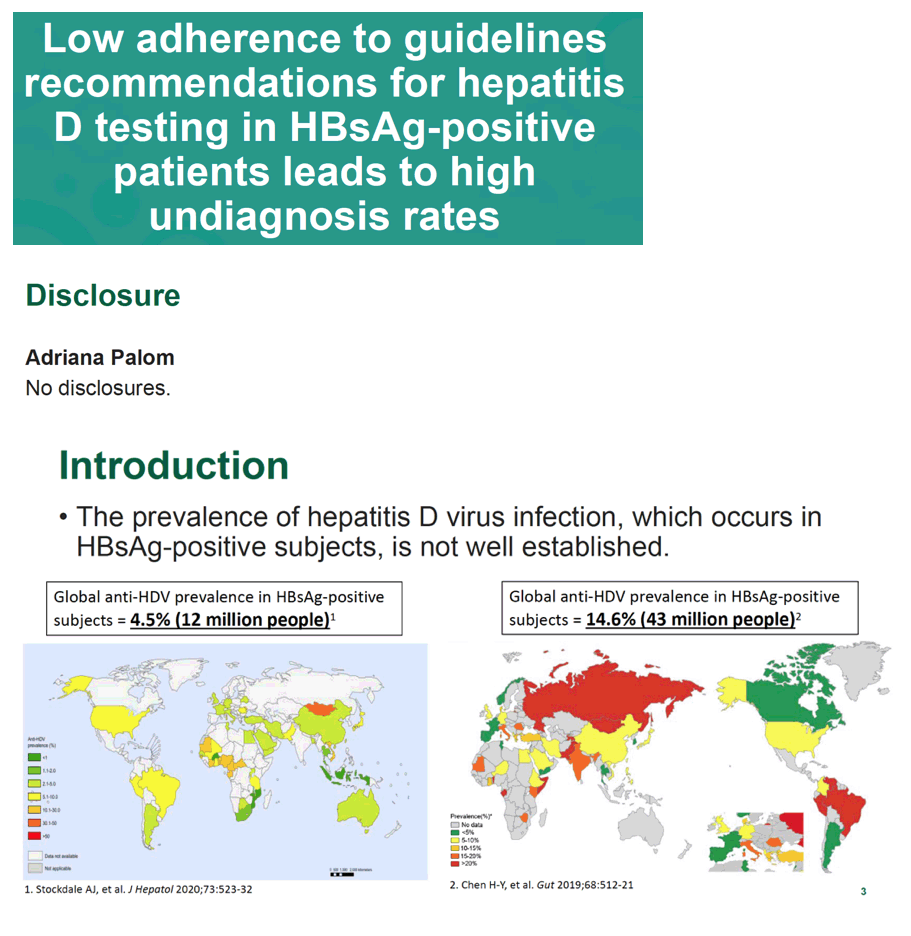
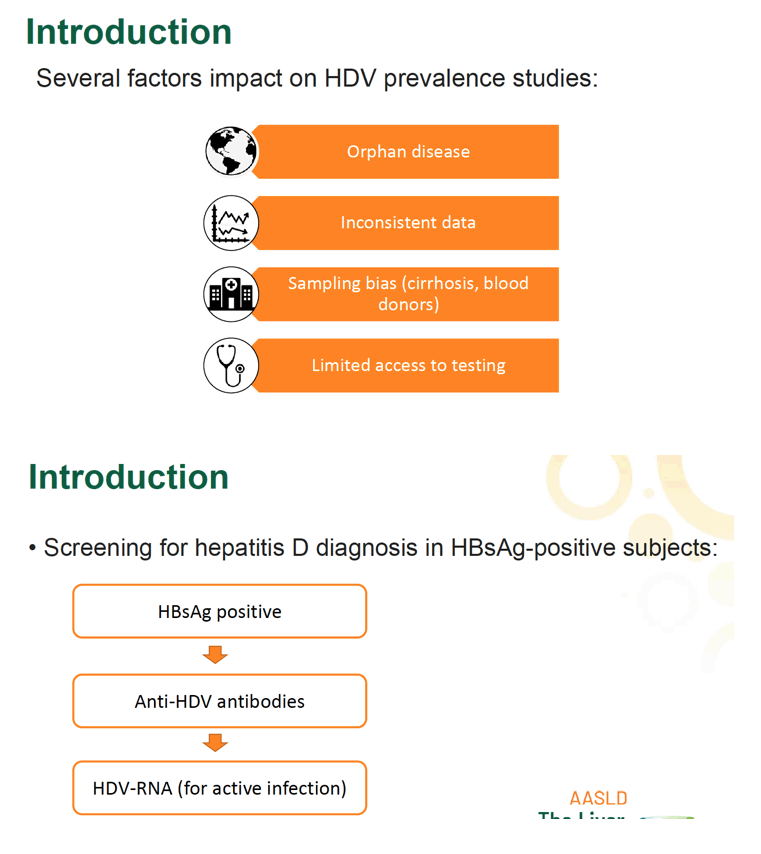
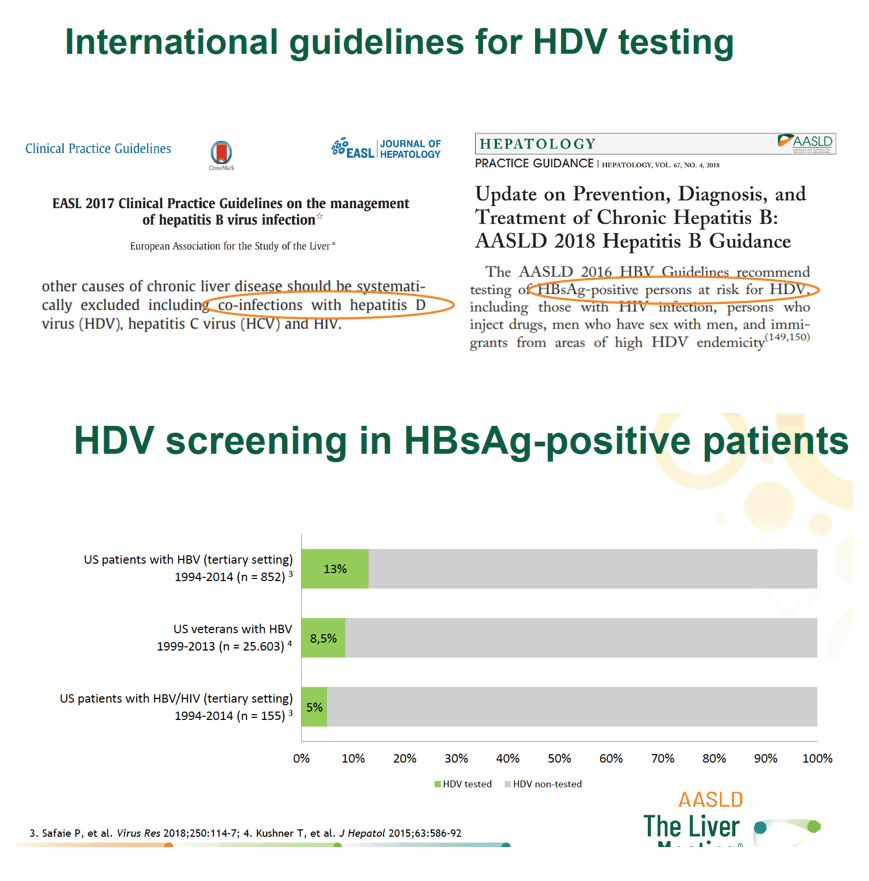
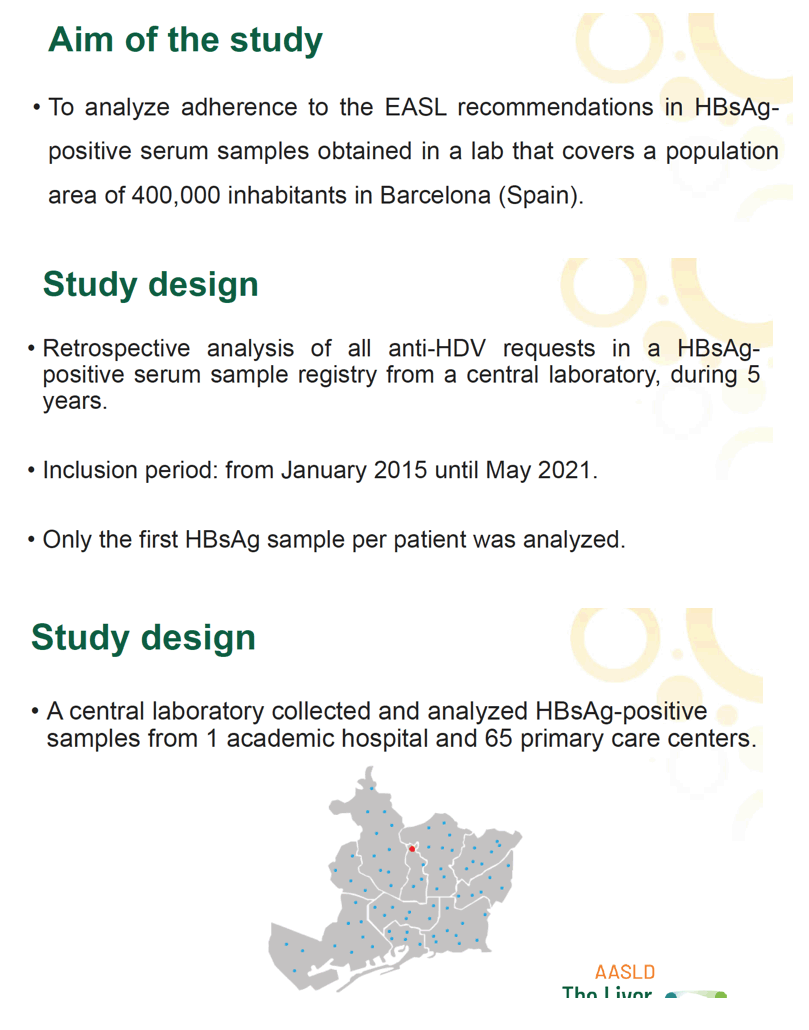
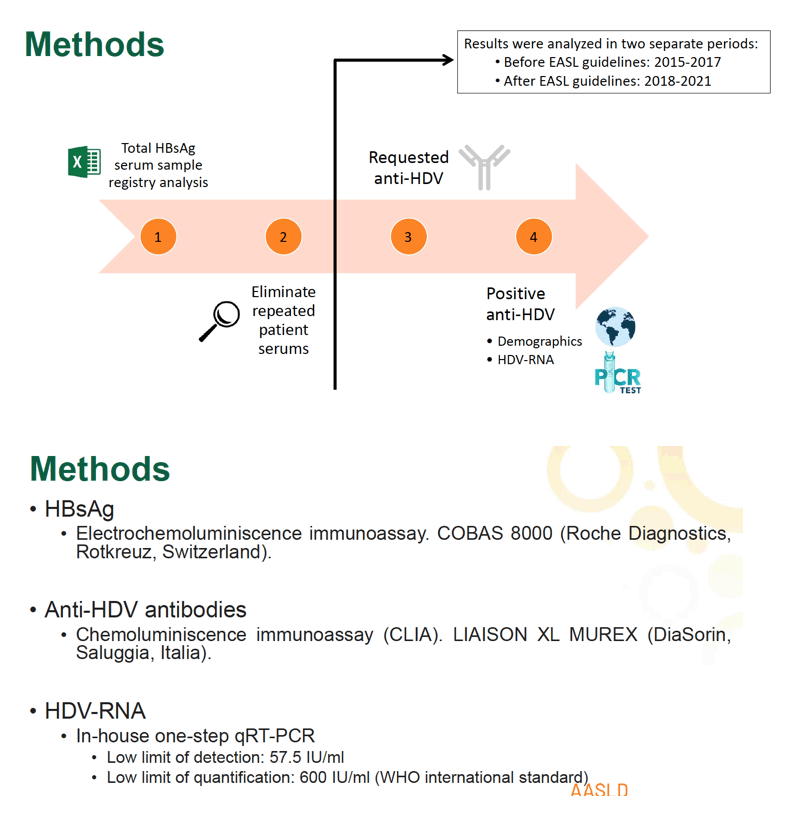
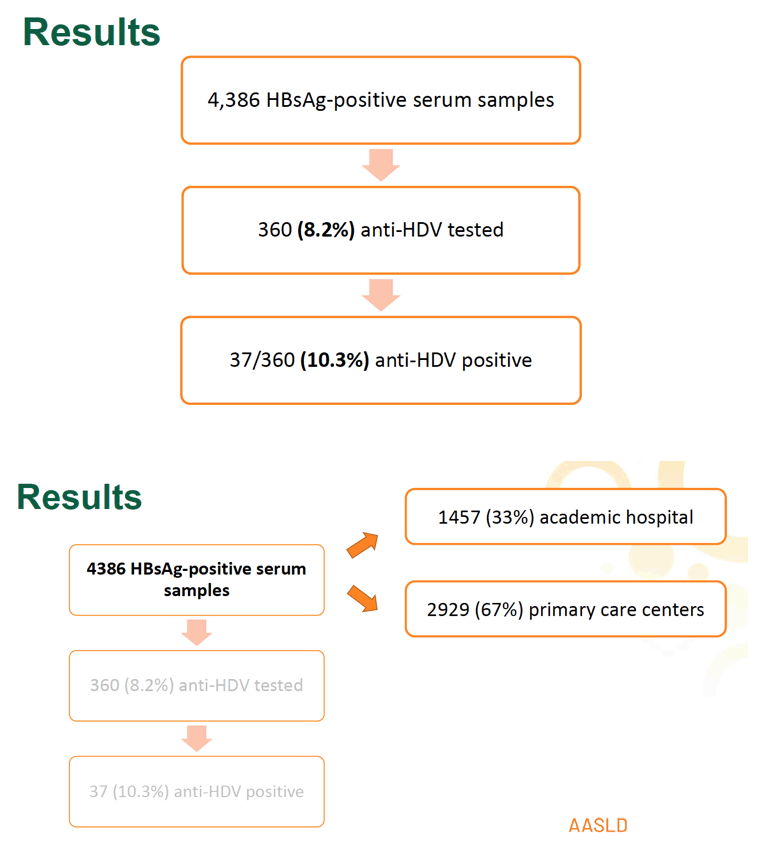
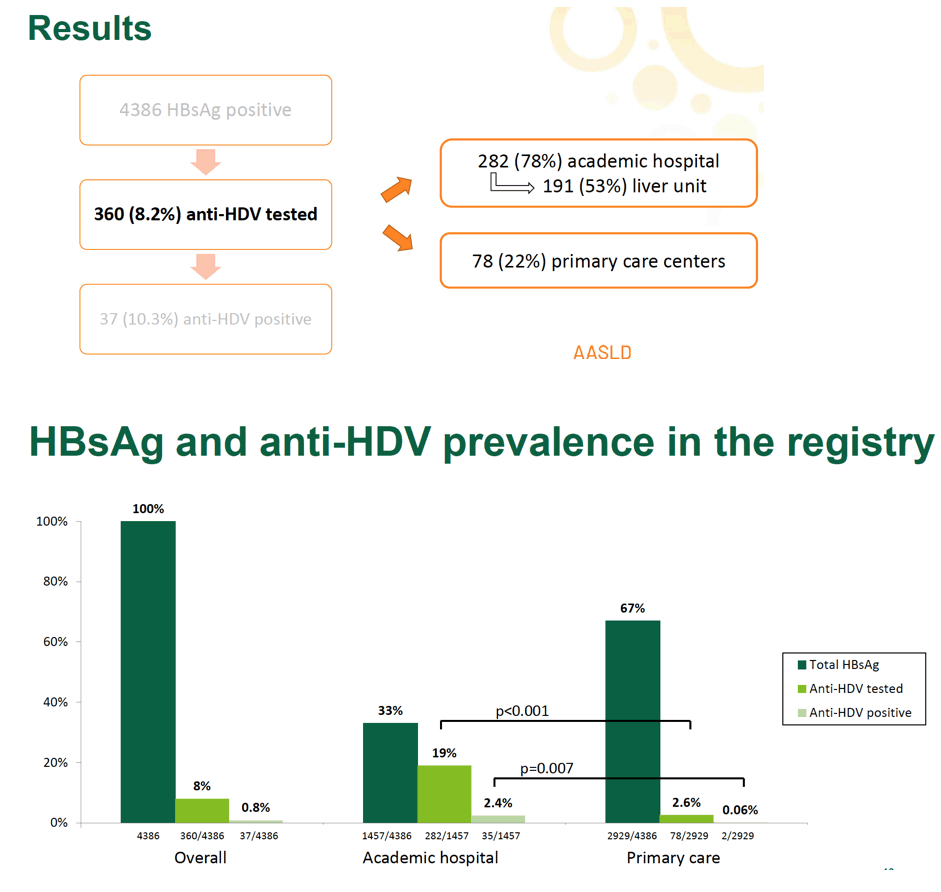

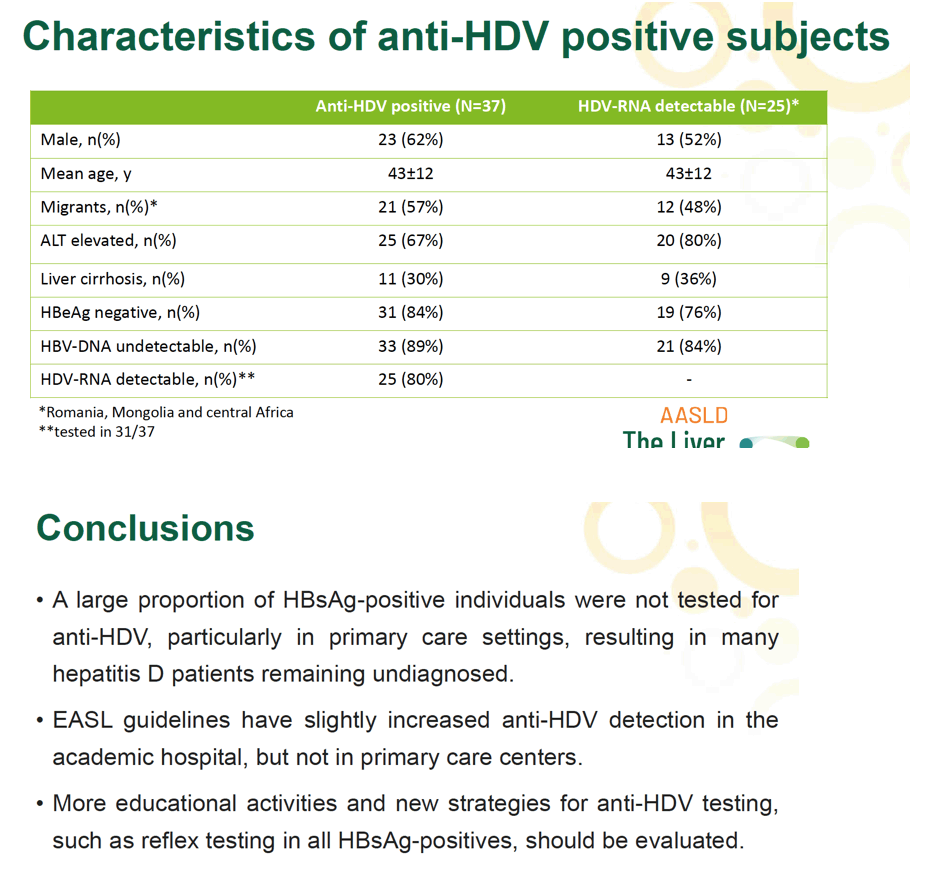
|
| |
|
 |
 |
|
|